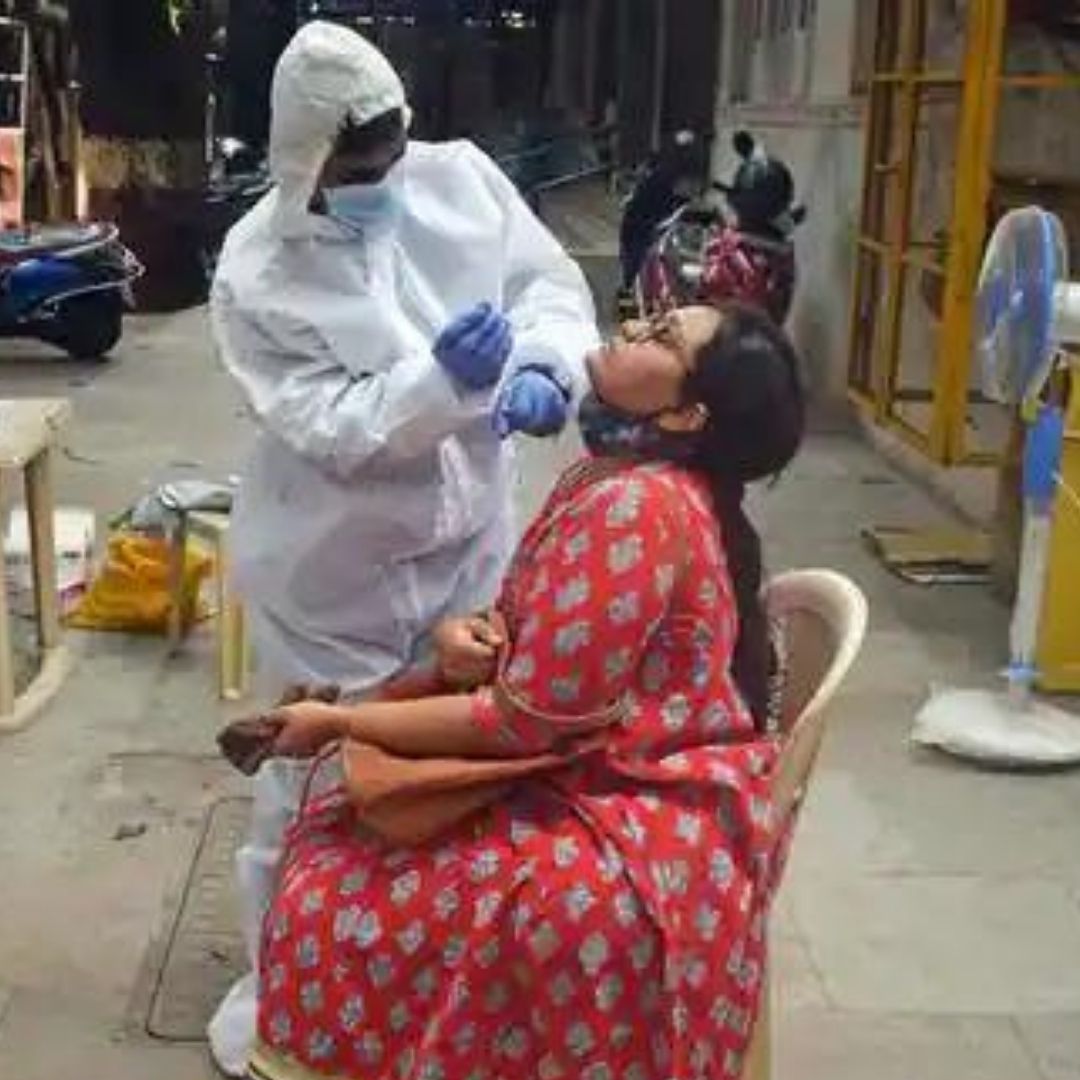
Image Credit: Livemint
Why Is The Middle Class The Best Best For The Indian Economy To Move Forward?
India, 10 Oct 2021 12:14 PM GMT
Creatives : Madhusree Goswami
A mountain girl trying to make it big in the city. She loves to travel and explore and hence keen on doing on-ground stories. Giving the crux of the matter through her editing skills is her way to pay back the journalism its due credit.
The middle class contributes to 79 per cent of the tax base in India. It also contributes to 70 per cent of consumer spending. The middle class is actually critical for India to go forward, and if they are badly impacted, in the absence of major improvements from the rest of the sectors of the economy like agriculture or industry, India is facing a bleak short term future.
The COVID pandemic shows no sign of disappearing. A September 13, 2021, article in Bloomberg indicates that the next six months will provide no relief for any country. This is backed up by data from Johns Hopkins which shows that COVID has not really come down that much since the first wave hit in 2020.
Even in highly vaccinated countries like Israel and Singapore, COVID is still a major threat to their economies. Economies who are vulnerable, which is basically anyone who is not in the developed world are headed for major disruptions as they have inherent structural problems which have multiplied. When it comes to India, we are no different and I have categorised the issues we face into the Good, the Bad and the Ugly. The solutions to these issues, have been explained in terms of our options for 2022
The Good
We all have an understanding of the good, or where our advantages lie in India, because that is something most of the country has been holding on to during the pandemic. From an economic perspective, let me list them out because they are impressive, though we have not leveraged them properly due to a myriad of reasons.
There are two major areas that give India enormous advantages. The first is the age of the population. India has the youngest population in the world with an average age of 29. A total of 600 million people are below 25 years, which means that we have a demographic advantage until 2050. This is major opportunity if the potential is tapped. The second major advantage is the services sector. Since 1947 India was an agricultural economy, but in the last few decades, the GDP map has changed and today we are a services-based economy with services contributing to around 54 per cent of the GDP followed by industry with 26 per cent and agriculture with around 18per cent. This is a major plus as in 1947, agriculture was almost 55 per cent of India's GDP. There are other good points like the middle class, who are around 28 per cent of our population in 2021 compared to just 2 per cent in 1947. We also have other great advantages like natural resources, a well-educated middle class, and around 83 million Indians who speak English. There are other advantages, but these are the ones which have major implications on our economy.
The Bad
Unfortunately, the bad far outweighs the good. While this can be expected in a diverse democracy like India, it is still a long list that has been further enhanced due to the pandemic. The first are the inefficiencies which cut across every area of the economy to the extent that we are unable to solve major issues. Another is the highly compromised banking system which is facing massive debts and has become a drain on the economy. The next are the grossly inefficient labour laws, some of which are 100 years old and which will always curtail our industrial base and make it inefficient compared to international competitors.
A ticking time bomb is that we still have too many people in agriculture. Although we have made great strides since 1947 in services, we have not as done well in other sectors. In 1947, 60 per cent of India's population depended on agriculture. In 2017, it was around 52 per cent. This is in the words of a 2017 article in Hindustan Times, "India's colossal failure to make its tryst with destiny". Then there is the fact that our industries contribution to GDP in 1950 was around 30 per cent. This number has declined in 2021, a very disturbing statistic which would never be acceptable in most countries and which has never been addressed properly. In the light of the pandemic, there are even indications that the industry has declined further, though the complete data is still not fully available.
The Ugly
The ugly are the grey areas we have been facing since demonetisation and GST, which have been further exacerbated by the pandemic. In fact, in any economy, the grey areas are always the differentiators, and the success or progress of a country depends on how much you are able to turn them to the good rather than the bad for the country. For India, with the triple blows of demonetisation, GST and the pandemic we are in a very precarious situation. Let us look at the straws that can break the Indian camel's back.
The first straw is the middle class. Although all sections of the Indian economy and society have been hit hard by the pandemic, the danger is that the collapse of the middle class could seriously impact us to the extent that our economy will go back by decades. According to a Pew Research report, the middle class has shrunk by 39 million in 2021 with most of these 39 million slipping into poverty. That is very, very bad news as the middle class contributes to 79 per cent of the tax base in India. More disastrous is the fact that the middle class also contributes to 70 per cent of consumer spending. The middle class is actually critical for India to go forward, and if they are badly impacted, in the absence of major improvements from the rest of the sectors of the economy like agriculture or industry, India is facing a bleak short term future. In 74 years, our industry has not grown and agriculture has declined, so we cannot expect miracles here. Our only chance is the middle class.
Another ballistic missile waiting to explode are the youth, our very strength, who can also become our Damocles sword. The enormous potential of our young population is a proved fact. But with our economy facing major difficulties, and with the World Bank estimating India's GDP growth in 2020 at -9 per cent and expected to grow by around 5 per cent in 2021, we have still not received the full impact of the 2020 pandemic problems. Our education systems are so poor that only around 55 per cent of graduates are employable. Considering we have around 12 million people available to join the workforce every year, this is a concern which could turn our youth advantage into a disadvantage. The Average unemployment in India in 2021 is around 9 per cent according to a CMIE report. But that does not tell the proper picture. States like Karnataka and Gujarat have an unemployment rate of just 1.5 per cent. Haryana has a 35 per cent unemployment rate, Rajasthan a 26 per cent unemployment rate, Bihar a 13 per cent unemployment rate, with other big states at 9-12 per cent. If in the good times, we had a shortfall of jobs, the ugly truth is that in the next 18 months we will face major challenges with the youth for jobs and employment opportunities that cannot be provided by an economy in the doldrums leading to further erosion of our economic progress and stability.
The Options
The main point of this article was to explore options for India in 2022. The background given so far was to enumerate the entire situation and look at credible options for the Indian economy. A lot of the issues mentioned here are well debated in the mainstream press. Even more suggestions have been given on how to solve or alleviate the problems facing our economy. Suggestions vary from a change in business laws, change in procedures, tax sectors of industry like agriculture, change in labour laws, investment in infrastructure, more support for industry, more subsidies to preventing more people moving into poverty, the list is endless. All of them miss the Wood from the Trees!
The reality is that if India's economy has to recover and not go backwards in 2022, we have to immediately do 2 things urgently:
• Boost the middle class
• Boost the services industry
Forget the rest. History over 74 years has shown us they will not be able to help the Indian economy recover in the short to middle-term, and there is even a chance they will put us back on the track
The middle class on the other hand is mostly involved in services, though they are also present in industry and other sectors. If you have a segment of your population who pay 79 per cent of your taxes and are responsible for 70 per cent of your consumption, you have to treat them like the golden goose. At present, they get step-motherly treatment with royal treatment going to agriculture and industry. This has to change 360 degrees as it is the only way India can overcome the pandemic's horrendous effects and move forward.
One suggestion to do this is to remove tax completely on the middle class to a very high threshold, as this will boost consumption and help the economy. If the tax deficit has to be made up due to this, tax agriculture, increase indirect taxes and increase corporate tax for companies above a certain threshold. The CSR activity tax can also be added to the tax kitty. This will free up the middle cast to save, consume, and invest more in the economy, a major boost from a segment which is anyway the mainstay of the economy.
The second suggestion is to boost the services economy, but this will happen if you give benefits to the middle class. One sure way of doing this is to remove any loan benefits to the poorer segments as they already get massive subsidies and offer this to the middle class instead. This would cover their business and services as a lot of them are in the SME segment as well, and they are the key to getting the Indian economy into recovery.
The final prognosis is: In the short term, that is the next financial year, concentrate a majority of resources on the middle class and services. This is our strength. Industry is not. It is China's strength. Agriculture is not. Ignore all other sectors apart from maintenance funds. That is the only solution for 2022, if India wants to move forward.
Also Read: Brace For Power Outages As Only One Day's Coal Stock Left, Warns Delhi Govt
 All section
All section













